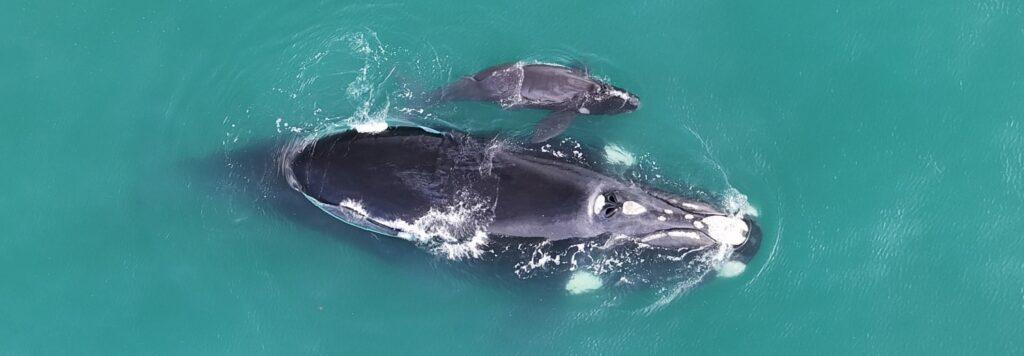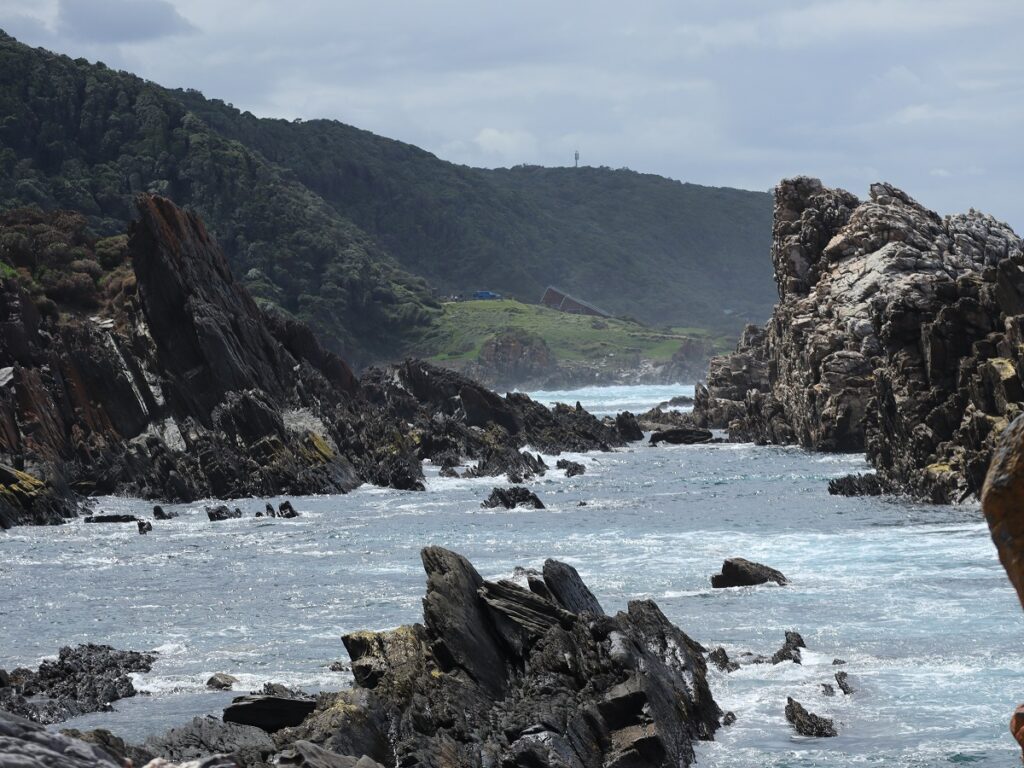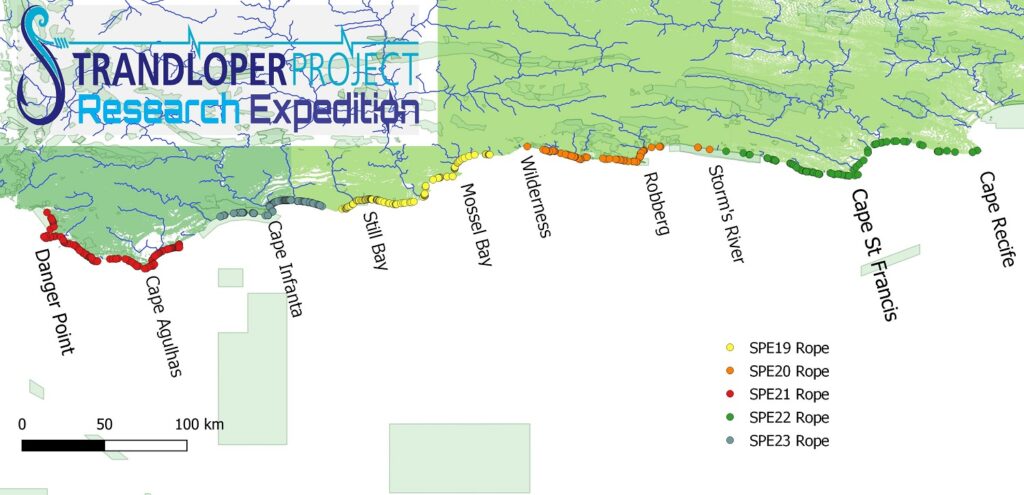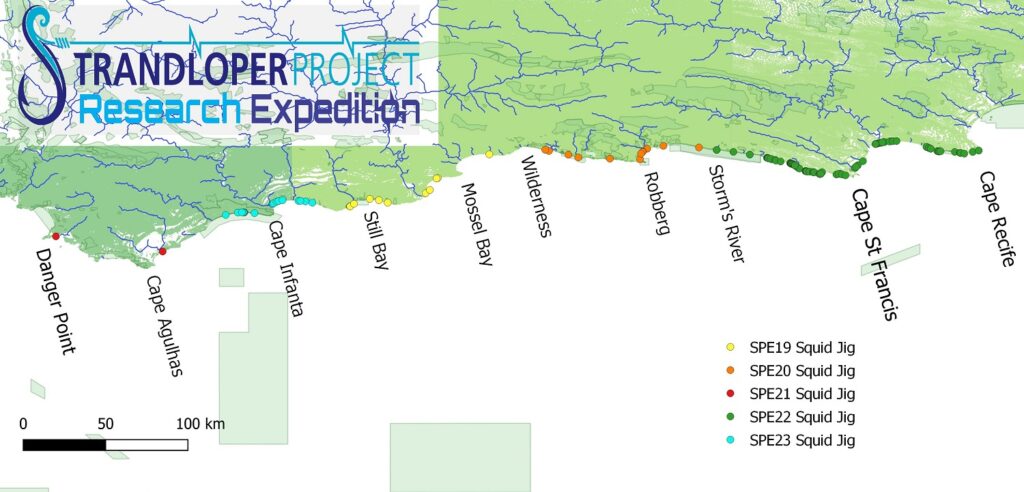

Marine Protected Areas – Gateways to a Secure Future.
Ancestral Link to Oceans
The ocean is a vast dynamic landscape. Admired, feared, respected and cherished, oceans have nourished, supported and conveyed humans from their origins along the southern Cape Coast, through migrations out of Africa to every other continent and numerous islands for the past 165,000 years.
As a species, our very culture can be attributed to the reliant provision of food when land masses suffered during terminal periods when the planet was blanketed by volcanic clouds 75,000 years ago. When terrestrial production ceased, early humans survived, even thrived, on food harvested from the intertidal zone.
Our link to the ocean is the foundation of our success as a species, and each time we visit the ocean, it triggers a primal memory to our collective past.
Custodians of the Future.
Depleting a renewable resource
As the human population has exploded through the 8 billion benchmark, more than doubling in the past 50 years (4 billion in 1974). This unprecedented population growth of any species has placed huge demand on the oceans for ecological services, which has taken its toll, depleting fish stocks, threatening extinction of species and polluting every ocean with our civilizations waste products.
While an audit of international fisheries paints a bleak future, there is a very simple solution to reverse declining and depleted stocks, the implementation of marine protected areas.
Five Ocean Services
The establishment of Marine Protected Areas, MPA’s, provides the following five ecological services.
1 – Safe guard biodiversity and create a haven for threatened species and habitats. Protecting species and ecosystems boosts both the size and abundance of individuals marine organism. Well planned MPA’s create functional structure, integrity and richness in an ecosystem, which in turn amplifies resilience of targeted species for sustainable fishing. Integral in the establishment of a MPA is to secure the protection of habitat critical to all stages of a species life cycle. In addition, no take MPA’s provide a refuge for migratory species.
The resultant increase in both biodiversity and biomass increases productivity in adjacent areas and increases resilience to stress events.
2- MPA’s mitigate against Climate Crisis. As a reservoir of biodiversity, they offer a buffer to the threat of species depletion and ecosystem collapse. As a haven for species that sequestrate CO2, they shield against catastrophic coastal events and rising tides. Seagrass and Eelgrass meadows have been shown to sequester more CO2 per hectare that tropical forests. Kelp forests buffer shoreline erosion during storm surges.
3 – MPA’s contribute to healthy coastal communities. Drawing on marine ecological services, coastal communities benefit from sustainable food provision, climate moderation, cultural connection and personal wellbeing.
5 – MPA’s facilitate co-governance and management of culturally significant sites. By establishing MPA’s to protect culturally significant sites for indigenous communities and to protect coastal communities that rely on subsistence fishing and harvesting, both heritage and food security are protected from the encroachment of commercial fishing and urban sprawl. As populations grow and fishing equipment becomes more sophisticated, pressure on ocean resources increase, and MPA’s become vital for local communities to secure their access to sustainable fishing resources. Integral in their co-management is the implementation of a fusion of indigenous and modified management methods of the marine resources to mitigate the impact of overfishing.
Rights are coupled with Responsibilities.
Currently, one of the largest challenges to ocean health and productivity is ocean plastic waste combined with abandoned, lost and discarded fishing gear, ALDFG.
The Scourge of Ocean Plastic Waste
Approximately 11 million tons of plastic enters the ocean each year, with about 9.5 million tons originating from terrestrial sources. The amount of ALDFG entering the ocean is estimated to be 640,000 tons and comprises between 10% and 50% of total ocean plastic pollution in different regions.
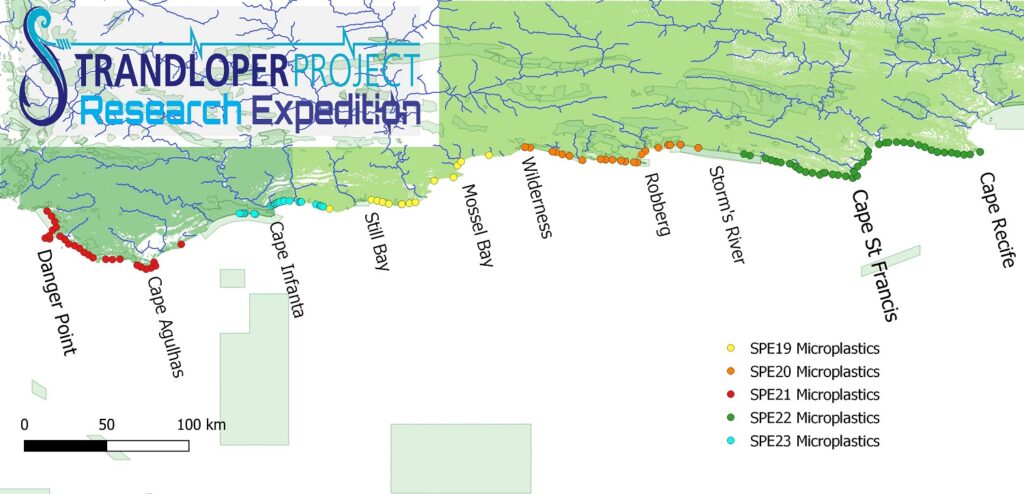
Fisheries compromise MPA’s with ALDFG
ALDFG
While local communities and fishing companies benefit from the increased dispersal biomass of target species from the MPA’s, the consequence of fishing activities, both recreational and commercial is the accumulation of abandoned, lost and discarded fishing gear.
Snagged terminal tackle and discarded monofilament from artisanal, recreational and sports fishing pose a risk of ghost fishing and entanglement for marine fauna. In the Southern Cape, the Strandloper Project has documented 12 species of fish killed by ghost fishing and 7 species of bird killed by entanglement in monofilament. Of the fish species killed by ghost fishing, 8 species were elasmobranchs, mostly endemic cat and shy sharks species.
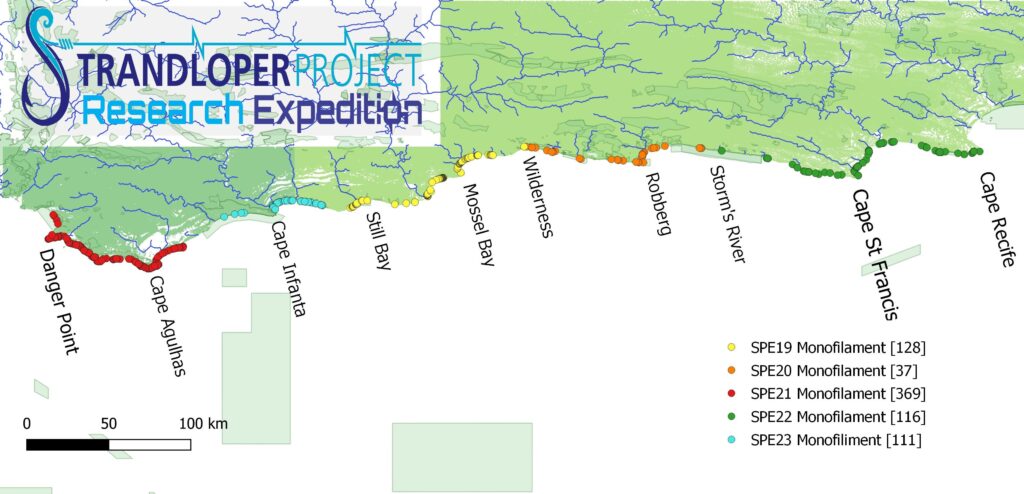
The distribution of lost and discarded monofilament between Hermanus and and Cape Recife show that subsistence and recreational fishing occurs along the entire coastline, with low incidences in two locations, namely the De Hoop and Tsitsikamma MPA’s. The low incidence of rod fishing in these two MPA’s is primarily due to access difficulties, namely topography in Tsitsikamma MPA and reserve utilization in De Hoop MPA.
Ocean Drift
When documenting washed out ALDFG, it is important to factor in the inshore ocean drift. On their 2022 coastal research expedition, the Strandloper Project found a sports safety helmet. Located 38km east of Storms River Mouth, it was a helmet used by an adventure sports company that operates at the Storms River Mouth. The location of the helmet would suggest that the minimum distance that floating items would drift before washing up, would be 38km. Considering a floating item lost 3km to 4km offshore, the drift distance, depending on size and density of the item, could drift as much as 50km, even up to 60km.
Harvesting from the Buffer Zone
In South Africa, different commercial fisheries utilize various MPA’s according to the species that they target.
Lost and discarded rope and sections of rope occur from all types of commercial fisheries. The general distribution of rope in the Southern Cape indicates that commercial fishing occurs throughout the region.

Fisheries utilizing crab pots has high densities of washed out crab pots associated with the Tsitsikamma, Goukamma and De Hoop MPA’s. The inshore counter current in the region moves eastwards and the plastic pots drift approximately 38km eastwards before washing ashore. If this drift is factored in, the pots indicated near Cape St Francis for example, would be more closely aligned with the Tsitsikamma MPA. This is also relevant to the De Hoop MPA.
The distribution of washed out squid jigs reflects where the focus of this fishery occurs, namely between Storms River and Jefferies Bay. The highest densities of washed out squid jigs occurs between the Tsitsikamma MPA and Cape St Francis. When the eastward drift is factored in, it becomes apparent that, again the Tsitsikamma MPA buffer zone is heavily utilized by the fishery.
Added level of Protection
South Africa is privileged to have 42 declared Marine Protected Areas, an array of protected areas for over 3800 marine species. Of these MPA’s, 41 provide protective cover for 5.4% South Africa’s continental economic exclusive zone (EEZ). As impressive as this is, it is still a far cry from the target of 30% protective cover of the EEZ.
The proclamation of a MPA is a complex and protracted process, and while South Africa is working towards the 30%, it will be some time before it is achieved.
In light of the impact that fisheries, both recreational and commercial, have on the marine environment through ALDFG and plastic pollution, it would be nice to see an added layer of protection of our marine resources with the implementation of improved management of plastic waste and protocols to reduce the loss of fishing gear, In addition, making fishing companies accountable for the clean up and recovery of lost gear would be a positive move to address the issue of ALDFG.






